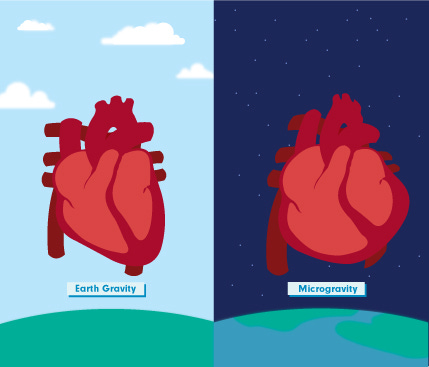What Are The Effects Of Microgravity In Space On The Heart And How Could We Benefit From The Research?
Written by Sanjana Anumukonda
Studies have shown that microgravity can cause the heart to become more spherical and decrease in size causing reduced heart function, changes in blood pressure, and irregular heartbeat.
Blood pressure decreases by 20% due to a blood flow shift towards the upper body by microgravity (“Cover Story | Does the Heart Love Space? - American College of Cardiology,” 2020). This causes further issues including bone and muscle loss
Long-term spaceflight can make the heart weaker, less able to pump blood as efficiently and lose muscle mass.
These research endeavors are especially crucial to us since they not only help us reach the moon but also improve cardiac studies on Earth. The goal is to use the Cardinal Heart 2.0 experiment to analyze existing medications in clinical settings to see if they can counteract the effects of microgravity on the heart.
Not only would this research contribute to space exploration, but it would also help with common cardiovascular illnesses. We can easily treat the heart condition associated with aging if we succeed in figuring out how to mitigate the effects of microgravity on the heart, whose effects are quite similar to the effects caused by aging (Fornell, 2023). It could help facilitate the development of a preventive medication for heart disease. Addressing heart disease, the Engineered Heart Tissue-2 experiment is also highly beneficial.
This type of research could prove extremely beneficial in the creation of new pharmaceuticals and in understanding the effects on heart tissue. Although professional findings from the study have not yet been disclosed. The possibilities are boundless; if this is accomplished, humanity will be one step closer to sustaining itself in space.
References
https://www.nasa.gov/missions/station/cardiovascular-health-in-microgravity/#:~:text=In%20microgravity%20the%20heart%20changes,control%20blood%20flow%20as%20well.
https://www.ncbi.nlm.nih.gov/pmc/articles/PMC8773383/
Written by Sanjana Anumukonda from MEDILOQUY


